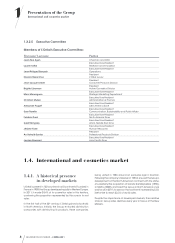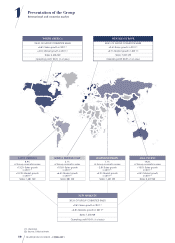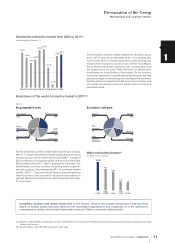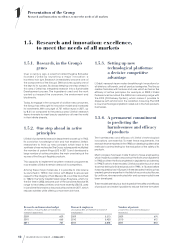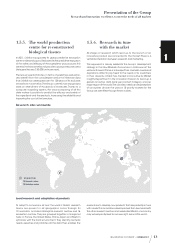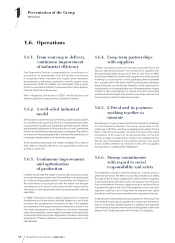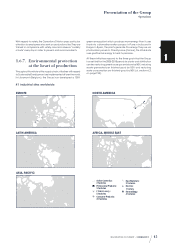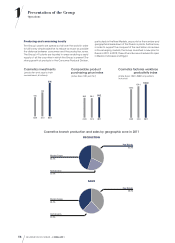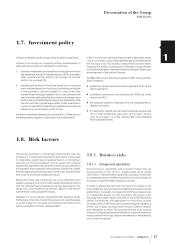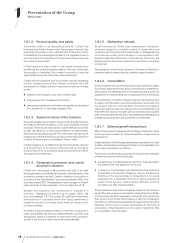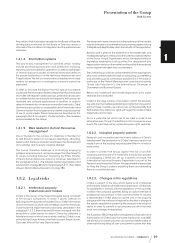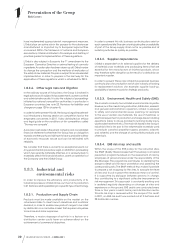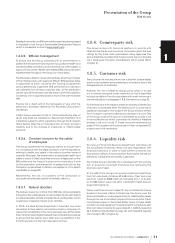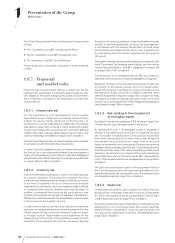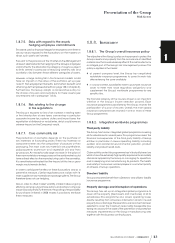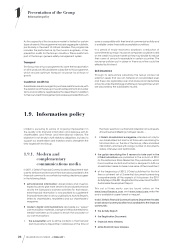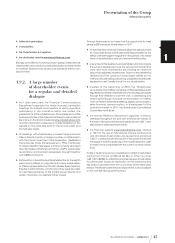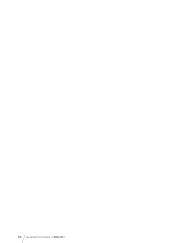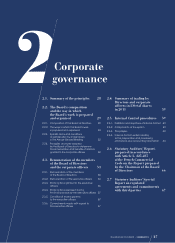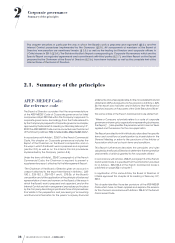Loreal 2011 Annual Report Download - page 20
Download and view the complete annual report
Please find page 20 of the 2011 Loreal annual report below. You can navigate through the pages in the report by either clicking on the pages listed below, or by using the keyword search tool below to find specific information within the annual report.
18 REGISTRATION DOCUMENT − L’ORÉAL 2011
1Presentation oftheGroup
Risk factors
1.8.1.2. Product quality and safety
Consumer safety is an absolute priority for L’Oréal. The
International Safety Assessment Department specifically
evaluates the safety of raw materials and finished products.
It establishes the toxicological profile of the ingredients which
are used and the tolerance of the formulas before they are
launched on the market.
L’Oréal goes one step further in the safety evaluation by
monitoring the potential adverse effects that may arise when
the product is marketed. This makes it possible to take the
appropriate corrective measures, where necessary.
Faced with the questions that civil society may ask regarding
certain substances and their effects on health and the
environment, L’Oréal’s position may be summed up in three
points:
♦vigilance with regard to any new scientific data;
♦cooperation with the relevant authorities;
♦precautions leading to substitution of ingredients in the event
of a proven risk or a strongly suspected risk.
1.8.1.3. Seasonal nature of the business
The pace of sales may, in certain cases, and for specific products,
be linked to climate conditions, such as for example suncare
products. The products and brands sought after by consumers
as gifts are reliant on a strong concentration of sales at year-
end and during holiday periods. This is the case in particular for
fragrances and The Body Shop products. Any major disruption
in either of these factors could affect L’Oréal’s sales.
L’Oréal endeavours to mitigate these risks through the diversity
and enrichment of its product offerings and by arranging
product launches and special product promotional events
throughout the entire year.
1.8.1.4. Geographic presence and overall
economic situation
L’Oréal has subsidiaries in 68 countries, with 62 % of its sales
being generated outside Western Europe. Global growth in the
cosmetics markets has led L’Oréal to develop its activities in
countries of the “New Markets” z one, which represent 38% of its
cosmetic sales in2011. The breakdown and changes in L’Oréal’s
sales are given in the paragraph 1.4.4. on pages 9 and 10.
Besides the currency risks mentioned in chapter4 in
note24.1.
Hedging of currency risk
on pages132 to134
and in paragraph1.8.7.2. on page22 , political or economic
disturbances in countries where the Group generates a
significant portion of its sales could have an impact on its
business activities.
However, its global presence helps to maintain a balance in
sales and enables results to be offset between countries and
geographic regions. In periods of major economic slowdown,
growth in the Group’s sales may however be affected.
1.8.1.5. Distribution network
To sell its products, L’Oréal uses independent distribution
channels, except for a limited number of stores which are
owned by the Company. The concentration or disappearance
of distribution chains and changes in the regulations with
regard to selective distribution could have an impact on the
development of the Group’s brands in the country or countries
concerned.
The presence of the Group’s brands in all types of distribution
networks helps to attenuate any potential negative effect.
1.8.1.6. Competition
Due to its size and the positioning of its brands, L’Oréal is subject
to constant pressure from local and international competitors in
all countries. The development of innovative products and their
adaptation to market needs is an ongoing priority for the Group.
This competition is healthy; it leads our teams, all over the world,
to always do their best to serve the interests of consumers and
the Group’s brands. In the context of a constant struggle to
obtain the best positions and launch the most attractive and
most effective product ranges, with an optimal price/quality
ratio, winning market share, improving operating profitability and
thereby ensuring growth are a permanent challenge.
1.8.1.7. External growth transactions
Within the scope of its development strategy, L’Oréal has made,
and may have occasion to make acquisitions or sign licence
agreements.
Implementation of this strategy nevertheless requires that L’Oréal
is able to find development opportunities at an acceptable cost
and under acceptable conditions.
The Group has introduced a process for the upstream oversight
of these transactions which includes:
♦the setting-up of multidisciplinary teams for the preparation
of projects and “due diligence” work; and
♦a review by the Strategy and Sustainable Development
Committee of the Board of Directors, then by the Board of
Directors, of the opportunities for acquisitions or for equity
investment for a significant amount or falling outside the
scope of the Group’s usual business activities, and the
conditions for their implementation.
These o perations may have a negative impact on the Group’s
results if the Group does not succeed in integrating the activities
of the companies that have been purchased, their personnel,
their products and their technologies under the anticipated
conditions, in achieving the expected synergies and in handling
liabilities which have not been anticipated at the time of
completion of the transaction and for which L’Oréal has little
or no protection from the seller.


